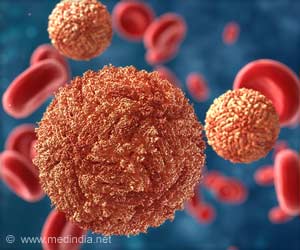sci-Plex technology combines improvements in labeling cell nuclei with advances in profiling and shows how individual cancer cells react to drugs.

‘sci-Plex technology combines improvements in labeling cell nuclei with advances in profiling what genes are expressed in each of millions of cells. This was accomplished at a single-cell resolution and in a cost-effective manner.’





Because of the huge gap between those extremes, most assays routinely miss subtle gene expression or cell state changes that might unveil mechanisms triggered inside perturbed cells. Such assays can also fail to detect nuances that might indicate unexpected side effects of drugs being tested, or varying reactions among genetically identical cells to the same drug, or why cells become resistant to treatment that was previously working well. To address these limitations, a research team representing many fields collaborated to develop a more informative technique. "This technology actually occupies a niche between the two common kinds of assays,” said one of the lead researchers, Sanjay R. Srivatsan, an M.D./Ph.D. student in the Medical Scientist Training Program at the University of Washington School of Medicine in Seattle. “You can get a sort of global view of the cellular responses. We think it’s going to be really powerful to categorize drugs, for example, and say what their mechanism is.”
In the online edition of Science, the researchers report their proof-of-concept findings. The lead authors of the paper, in addition to Srivatsan, are José L. McFaline-Figueroa, a postdoctoral fellow in genome sciences at the UW medical school; and Vijay Ramani, a former UW genome sciences graduate student who is now a Sandler Faculty Fellow at the University of California.
The senior researchers were Cole Trapnell, UW School of Medicine associate professor of genome sciences and an investigator at the Brotman Baty Institute for Precision Medicine in Seattle, and Jay Shendure, a UW medical school professor of genome sciences and scientific director of the Brotman Baty Institute. Shendure is also a Howard Hughes Medical Institute investigator and directs the Allen Institute Discovery Center for Cell Lineage Tracing at UW Medicine.
“The sci-Plex technique allows us to pool lots of genetically different cells and see what happens to many individual cells as they are perturbed in many different ways,” said Trapnell. “We then collect all the data together and analyze it using modern tools from machine learning and data science to understand something about what each of those drugs does to the cells.”
Advertisement
The results indicated significant differences in the ways some of the cancer cells reacted to specific compounds. They also revealed shared patterns among cells with regard to other chemical families as well as some properties that distinguished drugs within a chemical family. The researchers delved more deeply into the mode of action of one class of cancer drugs, HDAC inhibitors. They saw that the gene regulatory changes matched the proposition that these inhibitors stopped cancer cell proliferation by blocking access to an energy source.
Advertisement
“Some of this work could pertain to the treatment of disease, in helping medical researchers understand how certain drugs produce their effects, how the cell stage influences effectiveness, and why some medications work on some cells, but not on others,” Trapnell said.
“Physicians also give many people the same handful of drugs, and they work for some people and not for others,” Trapnell added. “Potentially sci-Plex could help us better understand why that is.”
Trapnell said he believes sci-Plex could be a useful tool for precision medicine: “Ultimately when someone gets sick with cancer, we want to kill the whole tumor, all of the cells, not just some of the cells. So understanding why some individual cells respond one way to a drug and others respond differently is critical to designing therapies that will be completely effective.”
A distinct advantage of sci-Plex, the researchers noted, is that it can distinguish how a compound affects subsets of cells. In addition to those that make up tumors, such subsets could also include lab-dish living models such as reprogrammed cells, organoids, and synthetic embryos.
The researchers believe that the ease and low cost of nuclei hashing, combined with the flexibility and scalability of their methods for single-cell sequencing, could give sci-Plex many basic research and practical applications in biomedicine. For example, it might help in building a comprehensive atlas of cellular responses to pharmaceutical interventions.
“It’s a very generalizable strategy,” Srivatsan said. “It can be performed with reagents which any scientist can acquire and it can be used in many ways.”
Trapnell agreed. “I’m really interested in how the single-cell genomics scientific community picks this up for things we didn’t anticipate. That happens all the time in our field. Technology developers and experimental biologists are repurposing techniques in all kinds of ways that the original developers did not envision.”
The work on sciPlex was funded by the National Institutes of Health (grants DP1HG007811, R01HG006283), the W.M. Keck Foundation, and the Paul Allen Frontiers Group.
Three of the scientists on this project, none of them named in this news release, declared financial interest in the form of stock ownership and employment in Illumina, Inc. One or more patents filed by Illumina or the UW may based on this work.
Source-Newswise















